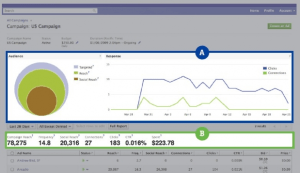 Written by ContentPowered.com
Written by ContentPowered.com
Most people don’t worry about how much text is included in the images they like, share, and promote on Facebook. This is because they are not directly advertising anything. An ad is an ad and a meme is a meme, but what happens when the lines get blurred? Even worse, what happens when an ad containing minimal text is disallowed, while an ad that is clearly non-compliant gets through? When do the rules apply and when do they not, and how do you know the difference? in this article, we will look at the answers to all these questions.
What Are The Limits?
If your post is not an ad, but a meme or similar image, there are no limits on how much text your image can contain, at least in theory. You can take a picture of a can of, for example, Red Bull and put text all over it, such as “Red Bull gives you wings. Red Bull and vodka gives you 4×4.” So long as the textual content is not a direct endorsement or is clearly understood to be a joke or satire, you’re probably all right. The can has text. The image is now loaded with text. But it’s cool because you’re not advertising. Theoretically.
If you are advertising, however, the rules get a lot more stringent. Facebook’s terms of service specify that no image used for advertising in news feeds can have more than 20% text. However, their TOS also stipulates that this does not apply to corporate logos such as Coca-Cola. If you’re confused at this point, you’re in great company.
Part of this stems from how the 20% cutoff is calculated, and part of it is because of how the system is policed. Many observers have pointed out that this results in ads that should meet the criteria being disallowed, while other ads that are clearly out of bounds get through. Let’s take a closer look at how this is determined.
Policing Ad Images In Facebook
In 2012, Facebook added a limit on text in images for advertisers. The stated reason was to clean up people’s news feeds and make them less cluttered, so it was easier for users to keep up with the pics of their grandkids and friends. The stated target ratio was 20%. If you made that ratio, you were golden. If you missed it, you were out. This immediately caused problems, however, because people weren’t sure exactly how to calculate just how much of their image, banner, or ad was text, except by making an eyeball estimate.
To further confuse the issue, Facebook’s enforcement policies, which have been called into question innumerable times, seemed to be applied unevenly to advertisers. This one got through, even though their ad was clearly out of bounds, while another didn’t. This caused questions about fairness, whether the clients who paid more for advertising got a get-out-of-jail-free card, and so on. In other words, it was business as usual when advertising with or using Facebook.
Because of this, Facebook implemented a two-step system, which is again theoretical. It’s theoretical because the first thing that happens to an ad when it’s submitted for news feed use is an automatic check of the image by Facebook’s “grid” software. This automatic check lays a 5×5 grid over the image and determines how much of the text is included in the squares. If it’s more than 5 squares, which is 20%, the ad is supposed to be rejected. However, the computer often misses bits and pieces of letters that go beyond gridlines. One might think that if any portion of a letter intrudes into another square, that square contains text as a matter of course, pushing many ads that would otherwise pass muster into violation.
This is why Facebook put in the two-step system, step two of which is a manual review and audit by a human being who, at least hypothetically, can be presumed to have a pulse, eyes, and a brain. This person’s job is to analyze the ad and make a final determination as to whether it meets the criteria or not. The problem here is that not all ads are checked by human eyes. Some pundits estimate that maybe 10-20% of all ads are actually reviewed, unless a user demands a review because an ad was rejected. The odds of such a review coming out in the client’s favor? Roughly 85:1. In the meantime, book covers and other images that contain far more text than is allowed in a news feed ad but are clearly intended to sell a product continue to proliferate in users’ news feeds.
How Do I Know If My Ad Is Compliant?
There are a number of ways Facebook’s automated system can trip up users. Images that are predominantly in grayscale tend to fare better than images in bright, vibrant colors, as Jon Loomer discusses in his article detailing his frustrations with Facebook’s ad policy. In this article, he made two versions of his brand banner: one primarily in grayscale, the other in eye-searing orange. The orange one didn’t survive the purge, but the grayscale one did, even though in terms of content, images, and text, the two versions were otherwise identical. Images with short, succinct text that can be easily grouped into squares are more likely to get through. Remember too that if your image or product has text on it as part of its “natural appearance,” that doesn’t count toward your total.
Facebook has launched a version of its grid tool with which users can check their ads for compliance before they submit them, increasing the odds of acceptance. Bear in mind that the system tends to balk at brighter colors if Loomer’s experience is anything to judge by, so your mileage may vary. You should also be aware of where your ad is going to be placed. It’s okay to put up a text-heavy banner on your product’s page, but not in your news feed.
What If I Like My Ad The Way It Is?
According to Facebook’s advertising TOS, you have three options if you think your ad is in compliance. First, you can demand a review. Second, you can edit the ad. Third, you can storm off in a huff, cussing Facebook the whole way. As usual, Facebook’s TOS clearly states it is the sole and final arbiter of what is and isn’t acceptable, and once a ruling has been made there’s nothing more you can do.
So if you’re paying for advertising, you have to stick to the 20% guideline and try to get your ad “in compliance.” If your ad won’t or can’t comply, you can run it through anyway and just see what happens. However, if you’re not paying for advertising, there are no limits other than common sense and the general Facebook TOS. It’s still a good idea to restrict your text to less than 250 characters regardless of what you’re doing, because short posts, images, and emoticons increase user engagement. Hopefully this helps clarify what users can and can’t do with their images and ads on Facebook.


